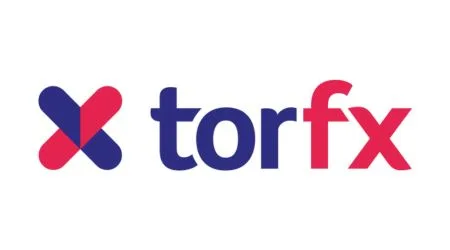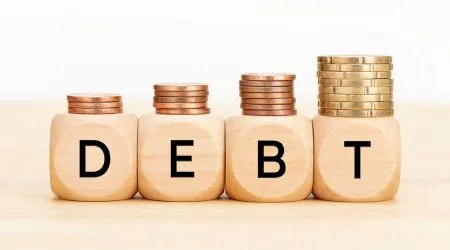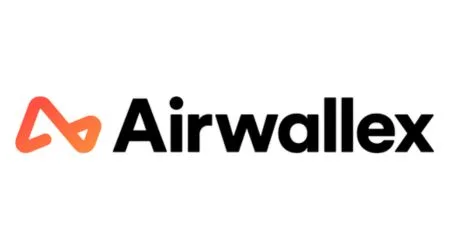Similar to a cashier’s cheque, bank drafts are typically used for large payments overseas. Although it isn’t the quickest way to send money, bank drafts are accepted in most countries and still used frequently.
What is a bank draft?
A bank draft is a payment issued by a bank on behalf of the payer, which allows another bank to draw funds directly from the bank issuing the draft. International bank drafts are often used for remittances because the bank draft is immediately converted into a foreign currency when it’s created, unlike a regular cheque.
Bank drafts are often confused with cashier’s cheques and money orders, but have key differences that give bank drafts the advantage when used for international transfers:
- Exchange rate. Bank drafts are exchanged immediately when they’re created. Going to your bank and creating a bank draft for €100 will use that day’s exchange rate, while a money order or cashier’s cheque will use the exchange rate when it’s cashed — which could lead to less money being sent if the exchange rate shifts heavily.
- No limits. Bank drafts have no limits. Money orders are usually limited to $1,000, depending on the business you’re purchasing them from.
- Typically safer. Many money scams involve fake money orders and cashier’s cheques, the former of which is difficult to verify. Bank drafts can be verified by contacting the issuing bank and providing the details on the bank draft itself.
How does a bank draft work?
A bank draft is effectively a cheque from a financial institution. This means the funds for the transaction are withdrawn from the institution rather than from the cheque drawer’s account.
This offers an important benefit over an ordinary cheque from an individual. The funds from a normal cheque are not withdrawn from the drawer’s account until the cheque is cleared, which means there may not be sufficient funds available when the cheque is cashed and it may therefore bounce.
With a bank draft, however, when a person requests one they must immediately transfer the funds from their account to cover the amount of the cheque. This adds a crucial extra level of security over a normal cheque.
Drafts can be drawn in the foreign currency you choose and are available for personal or business use.
Let’s crunch the numbers: Sending $1,000 to Mexico
Let’s say you need to send $1,000 to family in Mexico. This example is in USD. Here’s what you might face as far as costs when using a bank draft compared to an international money transfer as of September 14, 2020.
| Money transfer | Bank draft | |
|---|---|---|
| Fee | $0 | $30 + receiving bank fees |
| Exchange rate | 1 USD = 21.035 MXN | 1 USD = 19.933 EUR |
| Transfer speed | 1-2 days | 1-3 weeks, depending on mail |
| Amount received | MXN 21,035 | MXN 19,335 |
| Verdict |
|
|
The bank draft ends up being the slowest and gets the smallest amount of money to your recipient in Mexico. If you go with the money transfer service, your recipient ends up with MXN 1,700 more than the bank offers. If speed is crucial, a cash transfer can typically have your transfer to MExico in as little as 15 minutes — just make sure there’s a cash pickup location near your recipient before sending.
Who is most likely to be researching international bank drafts?
Finder data suggests that men aged 25-34 are most likely to be researching this topic.
| Response | Male (%) | Female (%) |
|---|---|---|
| 65+ | 5.37% | 6.18% |
| 55-64 | 7.15% | 5.37% |
| 45-54 | 10.41% | 7.32% |
| 35-44 | 10.57% | 7.97% |
| 25-34 | 12.03% | 9.92% |
| 18-24 | 8.94% | 8.78% |
How do I cash a bank draft?
Bank drafts are cashed just like any other cheque, but must be deposited into your bank account. Cash your bank draft in a variety of ways, including:
- At the bank. Bring your bank draft to your bank, along with photo identification, and ask the teller to deposit it into your account.
- At an ATM. Many banks allow you to deposit bank drafts at ATMs, as long as you hold an account with the bank. However, funds may not be immediately available when depositing your bank draft at an ATM.
- Cheque cashing store. Some cheque-cashing stores may be able to turn your bank draft into cash, but if it’s an international bank draft, chances are slimmer. Use this option as a last resort because it has the lowest chance of success.
How to compare bank drafts
- Fees. This is the most important factor to look at when comparing bank drafts. Look at the different fees charged for obtaining a draft and see if you could save money with a different provider.
- Available currencies and countries. Speak to your bank or financial institution about the currencies in which you can obtain a bank draft and the countries to which you can send them. If your bank doesn’t support bank drafts in your desired foreign currency, compare international money transfer options to send a transfer online.
- Processing time. Once you apply for a draft, how long will it take for your financial institution to process it?
- Application options. It’s also a good idea to compare the different methods available when applying for a bank draft. You’ll typically need to visit a branch or apply in writing.
Pros and cons of a bank draft
Pros
- Accepted in most parts of the world. International bank drafts are accepted in the majority of countries around the globe.
- Inexpensive. Although you’ll have to pay a fee when you apply for an international bank draft, drafts are still a relatively cost-effective method of sending funds overseas.
- Created in the local currency. As the cheque is made out in the local currency where it will be sent, it doesn’t require conversion and is therefore able to be banked quicker than a cheque written in CAD.
- Secure. Bank drafts must be deposited into a bank account and cannot be cashed.
Cons
- Slow. Bank drafts typically take several weeks to process, so they’re only a viable option where the speed of the transaction is not a concern.
- Availability. There’s a chance your bank may not support the currency and country you want to send a bank draft to.
- Time consuming to replace. Bank drafts are secured and can be replaced when lost, but the process is far from easy. Every bank has its own procedure, and at the very minimum you’ll have to wait for the bank draft to be delivered internationally a second time.
Is using a bank draft my best option?
Bank drafts are secure ways to send money. But when sending an international transfer, you have to rely on the postal service to deliver the bank draft safely. Many things can go wrong along the way, and even when everything goes right, there will still be a significant delay between sending and receiving the bank draft.
Consider using an international money transfer service instead of a bank draft when speed and convenience are crucial.
Using a bank draft to pay someone internationally
The transfer services below are not bank drafts, but rather allow you to make bank transfers which can be received by your recipient in their bank account or as cash. Consider using these services when:
- Speed is important. Some international money transfer companies can have money in your recipients account in as little as a few minutes.
- You want to pay in cash or with a credit card. Bank drafts are limited to payment by bank account, so use an international money transfer to pay by debit card, credit card or cash.
- Your bank is closed. Bank drafts have to be created at the bank, in person, but online money transfers can be sent 24/7, 365 days a year from the comfort of your home.
- Exchange rates are important. Bank drafts use the exchange rate offered by your bank, which may not be as strong as the mid-market rate offered by many money transfer companies.
What should I look for when comparing bank drafts?
There are a couple of factors to keep in mind when comparing bank drafts, to make sure you end up with the most cash in your pocket.
- Fees. Most banks drafts weigh in at around $7.50, so make sure you’re not paying more than this amount in fees.
- Available currencies and countries. Figure out which bank can get your money to where it needs to be, preferably in the right currency.
- Processing time. Before you apply for a draft, find out how long it typically takes to process, since this can influence how quickly your recipient can access their cash.
- Application options. Applying for a bank draft can be a hassle, so it’s best to find out beforehand if you need to visit a branch or apply in writing.
Bottom line
Bank drafts have their time and place, but as the financial world shifts more and more into the digital realm, bank drafts may become obsolete. There are many ways to send money internationally that can be done entirely online — to learn how to get started with international money transfers, head over to our guide on transferring money.
Frequently asked questions
More guides on Finder
-
Alternatives to TorFX
Looking for alternatives to TorFX for sending money abroad? Check out these reputable money transfer services.
-
How to pay off an overseas debt
Paying off an overseas debt with an international money transfer can lead to huge savings on fees and interest.
-
Apps like Remitly
Browse money transfer services like Remitly to see if you can send send money overseas faster and cheaper.
-
10 apps like Venmo in Canada
We compare 10 Venmo alternatives to help you find the mobile payment app that suits you.
-
4 Wise alternatives in Canada
Looking for a money transfer service like Wise? Check out these four Wise alternatives.
-
Best money transfer apps
Fast, affordable, safe and easy to use — these are the best money transfer apps in Canada.
-
Xe: A Cheap & Fast Way to Send Money Transfers
Read our Xe money transfer review to learn how to send funds to bank accounts in over 190 countries with this money transfer service and forex platform.
-
How to track a wire transfer
Most transfer services provide a tracking number to make wire transfer tracking easy.
-
How long does an international wire transfer take?
Ever wondered how long it takes for an international wire transfer to arrive in your recipient’s bank account? Find out here.
-
What details do I need for an international money transfer?
What bank account details do you need to provide to send or receive an international money transfer? Your guide here.



